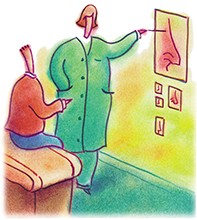Peer Reviewed
Feature Article Cosmetic medicine
Cosmetic surgery. Part 1: popular procedures for the face
Abstract
Cosmetic surgery has attracted considerable media attention and many people will ask their GP what the surgery might achieve for them. Are they candidates and what are the risks? The goals of cosmetic surgery are to improve patients’ sense of wellbeing along with improving their appearance. This two-part article will discuss procedures that are currently popular for the face and body.
Key Points
- Each individual’s changes in natural ageing are largely influenced by his or her degree of facial expression, amount of sun exposure, genetics and lifestyle.
- The major trends in facelifting have been the development and provision of less invasive procedures in order to reduce residual scarring and minimise morbidity.
- The S-lift, a facelifting procedure that has received much attention in the popular press, has a higher rate of patient dissatisfaction. It has not been authenticated in the scientific literature and results are not long lasting.
- Digital imaging technology has made preoperative facial imaging popular. By viewing the possible cosmetic improvements, patients can realistically appraise the potential benefits.
- In teenagers, a twisted nose or dorsal hump will detract from facial appearance and may cause psychological stress that is reflected in dysfunctional social behaviour. In such cases, surgical correction can greatly improve psychosocial skills.
- Solid silicone implants for the chin and cheeks are quite popular. No systemic side effects secondary to the use of these implants have been alluded to.

